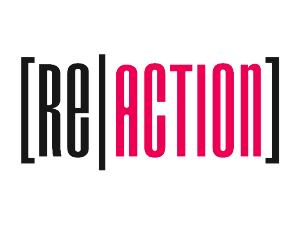Teaching Twine to Ten Year Olds

I saw Anna Anthropy speak in Chicago in 2012. She was touring for the release of her book, Rise of the Videogame Zinesters, and visited a small Wicker Park studio space near my apartment. Anna is well-known for her promotion of independent games, especially among the “amateurs, artists, dreamers, dropouts, and queers” (among others) that might lack the technical skills for traditional game design. Anna outlines in simple terms the argument for more people making games. It’s easy to agree with her in principle, but I also felt called to action – which is why I decided to teach a Twine workshop to a group of 15 elementary students. I worked with 826Chicago, the local branch of a national non-profit creative writing program.
I don’t consider myself a game designer, but, like many others who spend too much time playing video games, I’ve dipped my toes in those waters.
RPG Maker 2000, one of the first English releases of a venerable series of Japanese game-making programs, came out while I was in high school. I convinced my teacher to let me create a SNES-era RPG based on William Faulkner’s As I Lay Dying instead of a traditional essay. The game itself was awful, but probably no worse than any essay I’d have written and I had a hell of a lot more fun making it. RPG Maker was clunky, but usable by a 15 year old with basic computer skills and rudimentary grasp of programming logic. Inspired by Anna’s book, I hoped the kids I was working with would find the process as exciting and interesting as I had.
I asked my class what kind of story they’d like to tell. Unanimously, they decided on the otherworldly. The story centered on an astronaut’s mission to Jupiter. The astronaut’s goal: to reach the center of the planet. Along the way, the astronaut (“you”) would encounter prickly Jupiter natives, treacherous terrain, and giant animals. If you’ve ever worked with young children, this probably won’t surprise you. Kids are capable of writing about the most mundane, and intimate, parts of their lives. And they are just as eager as adults to break away from their daily routine and write about the utterly fantastic.
Even though they understood it perfectly well, my students weren’t interested in the fancy formatting Twine offered. Pictures, different fonts, scrolling text; I thought ten-year-olds would be thrilled to play around with those effects. A few kids sprinkled HTML tags in their story, but they were really interested in the choices. How do you create interesting choices in a story? What choices make sense in this world? How do early choices affect the later part of the game? How do you reconcile the branches and lead the player towards one of our three endings? My students never lacked for ideas. They never failed to put themselves inside their own worlds. What they needed was a way to let other people in too, and I wanted Twine to be that portal.
Kids struggle expressing their own thoughts and feelings, much less what life might be like on another planet. You cannot question their creativity or enthusiasm; they spoke passionately, and even argued, about how the protagonist might feel talking to a Jupiter-born dragon. But for all their passion, children haven’t yet developed the communication skills older people can take for granted. 826Chicago focuses on prose writing, but when working with kids, you let them work in whatever form it takes to jumpstart the creative process: improv, comics, and (so I hoped) video games.
Game design software has only gotten better since RPG Maker 2000, and Twine is about the simplest software you can use to create a choose-your-own-adventure-esque branching story.
Still, my biggest concern was that Twine would be too difficult for a classroom of ten-year-olds; that a collaborative story would require too much coordination for the class to handle; that even Twine’s simple markup language would be confusing for young kids.
I couldn’t have been more wrong. The classroom understood the concept immediately. I dove into more elaborate HTML formatting without so much as a raised hand. Only a handful of kids had trouble understanding the five-foot tall story flowchart we drew on the whiteboard. It was striking what these kids understood without explanation, and humbling for me to consider that I was teaching these kids far less than I thought.
Throughout the workshop, we honed in on the most interesting choices, wrote our first drafts, went through the tedium of edits. We talked about whether a reader was more likely to choose to gain telekinetic powers, or magical digging claw-arms. Other times, students blanked on the most banal details, freezing because, for some reason, they couldn’t figure out what color the rocks are on Jupiter. Perhaps the biggest challenge was reminding students to keep their reader in mind. That the story starred “you,” not “I” or “she” or “it.”
But “biggest” is relative. I think back to my experiences in high school, desperately searching primitive Internet forums for tutorials on poorly documented software so I could finish my project by the due date. If I had been born a decade earlier, making a video game wouldn’t have even occurred to me. For people born today, they probably won’t think twice about creating something interactive; they’ll have the tools and support at hand. For my workshop students, I can only hope I’ve done my part to bridge that gap.
During my time at 826Chicago, I usually helped kids write in simple, hand-written prose. Above all else, our goal was to teach these kids that anybody could write, that writing was fun as well as challenging, and that good writing was not a far-off goal but a skill you develop over time. A common strategy for struggling kids was to break a project into small, achievable objectives. Start with the first sentence. What’s the subject? What’s the verb? Let’s try to write two more and then we can go play a game.
I don’t know if Twine will be around in five years when these kids enter high school, and I don’t think that matters. I don’t use RPG Maker anymore, and they won’t use Twine. In either case, those tools served their purpose. They took something big and strange and brought it within arms-reach of kids who just wanted to tell a story. Twine brought it a little closer than RPG Maker, and in five years some new tool will bring it closer still. Let’s try and write two more sentences, and then everybody else can play your game.
